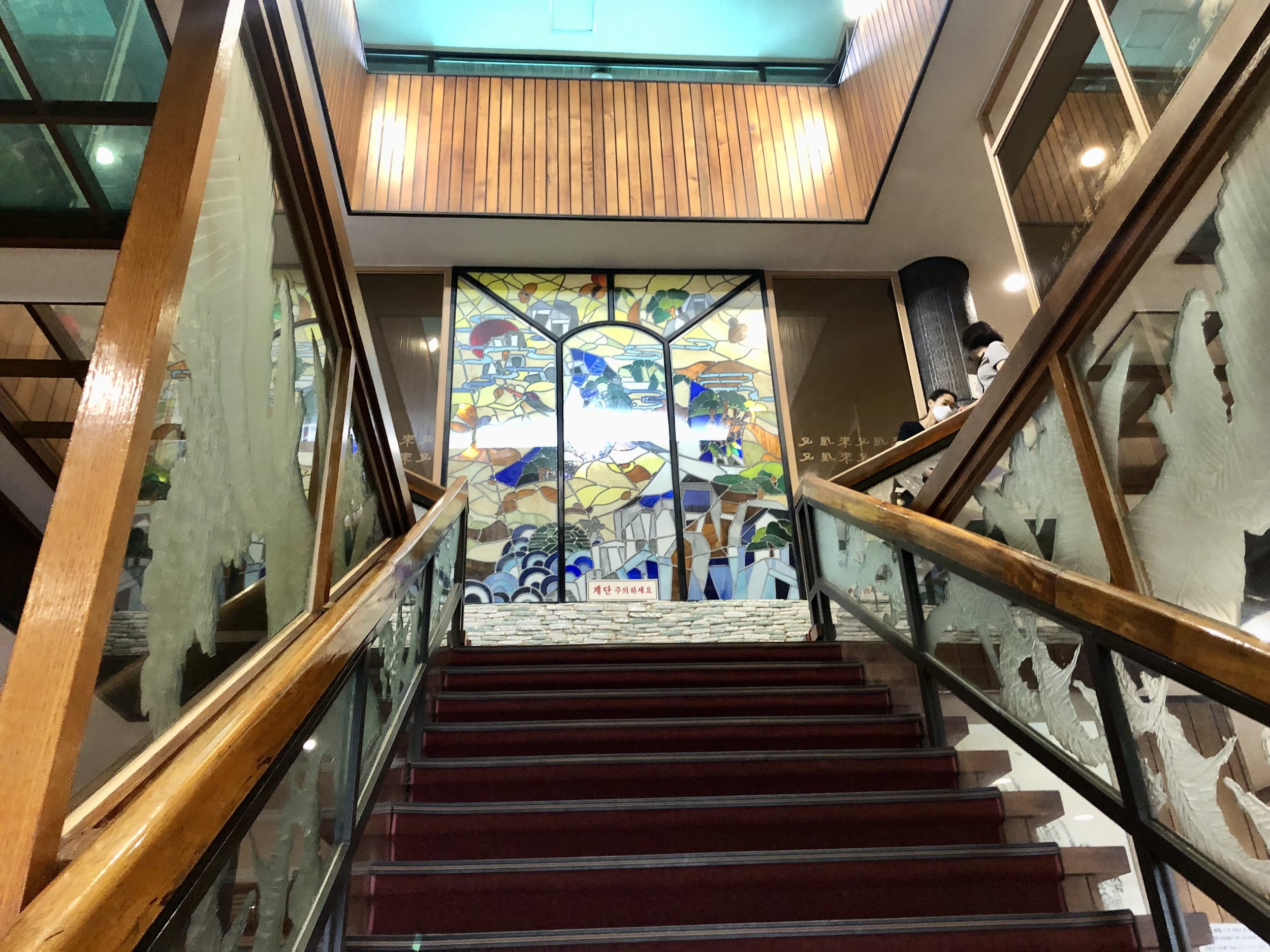As Seen Abroad: North Korean Food at Woo Lae Oak in Seoul
We’re on vacation! For the first time since we started this blog, we’re traveling abroad. As we journey across Asia, Europe, and America, we’ll update with some of the fun places we visit. Yay!
Sometimes it’s impossible to avoid bearing prejudice against a place. While my American childhood produced a love of Mexican and Italian cuisine and a predisposition toward liking Japan as the source of ninjas and video games, it also produced a hesitancy toward certain other places due to stereotypical images of rude Parisians and scary Russians from the TV and movies of my childhood. The messages you receive about a country and its people are impossible to ignore, and it’s tough to remember that you only know a tiny sliver of what a place is all about.
That’s certainly true of North Korea. While I’ve technically been inside the country thanks to a trip to the DMZ and the JSA at Panmumjeom, all my knowledge of the place comes from news, politics, and documentaries. I don’t personally know any North Koreans, and the country’s controlling policy toward what outsiders see means the average citizen’s life is a mystery to me. When I think of North Korea, I think of its leaders, not the folks like us.
As such, it never occurred to me that I had absolutely no idea what North Korean cuisine was. Is it the same as South Korean food, Chinese food, or something entirely different? My wife and I decided to remedy this with a trip to Woo Lae Oak, one of the most popular North Korean restaurants in Seoul.
Woo Lae Oak: Seoul’s North Korean dining hotspot
Located not far from Gwangjang Market and a short trek from our Insadong hotel and my favorite place on Earth, Woo Lae Oak has drawn a lot of attention to the North Korean immigrant culinary community in Seoul thanks to its Michelin Bib Gourmand recognition. This popularity has meant big crowds: though we arrived right as it opened, there were 32 groups already waiting ahead of us.
The way you reserve your spot in line is by going up to a big touchscreen that lets you enter the number in your party. It also asks for a Korean phone number to alert you when your table is ready, but we didn’t have a Korean phone, so we went inside. A small, serious middle-aged man behind a podium listened as I explained this to him.
“Only two?” he said.
“Yes, two of us,” I said.
“Go upstairs,” he said.
I can’t be sure this tactic will work for everyone, but in our case, being foreign allowed us to skip the line and go straight upstairs to our table.
The menu: what exactly is North Korean cuisine?
Open since 1946, Woo Lae Oak offers a wide variety of dishes, most of which will look pretty familiar: you can grill meat right at your table (though this is rather expensive), and they serve kimchi with your meal. The specialty, and our reason for seeking out the restaurant, is Pyeongyang cold buckwheat noodles. Cold noodles might sound strange to Westerners, but it’s something we enjoy in Japan all the time.
We decided to go with a cold noodle soup as well as a hot noodle soup. Both were served in big bowls that we could serve ourselves from, along with rice, a trio of small dishes (some other tables had many many more small dishes), and scissors for with to cut the noodles.
How does North Korean food taste?
The kimchi and other side dishes were quite good, but that’s not why we were there. The cold soup’s noodles and meat were fine, as was the beef and glass noodle-filled hot soup. But in both cases, the main draw was the broth. The hot soup featured a pure beef broth that tasted just like meat water, and I don’t mean that as an insult. It tasted like meat water if meat water were the thing you wanted most in the world right now. The flavor of the beef came through fantastically, and I kept going back for spoonful after spoonful.
The real star of the show was the cold broth that went with the buckwheat noodles. It was a little bit sweeter, with egg adding to the flavor. The noodles themselves were fine, but the broth was refreshing and delicious. We found ourselves switching back and forth between the cold and hot broths throughout the meal, almost ignoring the solid food because the broths were so good. Ultimately, the sizes of the bowls proved too powerful for us, and we left having hardly made a dent in the food.
Is Woo Lae Oak worth trying?
Absolutely. North Korean food, it turns out, is delicious, and this might be a once-in-a-lifetime experience for many visitors to Seoul. There’s probably not a North Korean cold noodle place on your block, and that might be the case for the rest of your life, so if you’re in Seoul, take advantage of this rare opportunity and try some cold soup at a place that does it really well.
I don’t like to be one of those nauseating travel bloggers pontificating on how my vacations make me a better person, so I’ll spare you any lectures on how eye-opening of an experience this was and simply say that the food at Woo Lae Oak is worth going out of your way for regardless of where it comes from, and the learning experience it provides (if it actually provides any) is just an added benefit. I will now try North Korean cuisine any chance I get, and if I ever get the chance to eat at Woo Lae Oak again, I will absolutely take it and hope I get to skip the line because of my dumb white face.




















